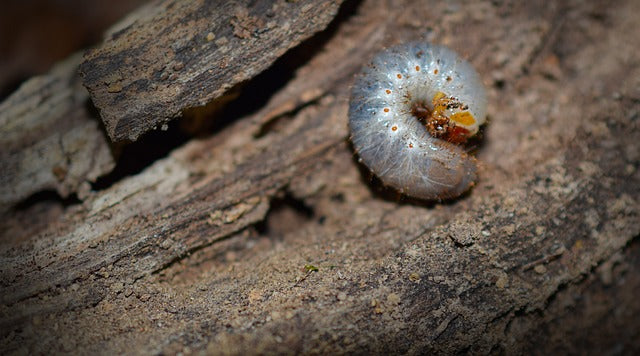One persistent problem that can plague your bowling green is the presence of chafer grubs. These voracious larvae can wreak havoc on the roots of your grass, leading to unsightly patches and weakened turf. Fear not though as we've compiled a comprehensive guide to help you bid farewell to chafer grubs and restore your bowling green to its former glory.

Understanding Chafer Grubs: Chafer grubs are the larvae of certain beetle species such as the European chafer (Amphimallon majalis) and the June beetle (Phyllophaga spp.). These white, C-shaped larvae feed on the roots of grass, causing the turf to brown and become uneven. Identifying the presence of chafer grubs early is crucial for effective control. Chafer grubs can be found in the soil under the loose turf. They have stout white bodies curved in a C shape, light brown heads with three pairs of legs at the head end. They are bigger than the adult beetles and if straightened out can be up to 18mm (almost ¾in) long.
-
Inspection and Monitoring: Regularly inspect your bowling green for signs of chafer grub infestation. Look out for areas with thinning grass, patches of dead turf and irregularly shaped brown spots. If you notice an increase in birds(crows and magpies mainly) or foxes digging up your green, it could be a sign of a chafer grub feast.
-
Cultural Practices: Promote a healthy and resilient bowling green by adopting proper cultural practices. Ensure that your turf receives adequate water, sunlight and nutrients. Avoid over-fertilisation as excessive nitrogen can attract egg-laying beetles. Mow your lawn at the recommended height to encourage strong root development.
-
Nematodes: Nature's Tiny Warriors: Beneficial nematodes (Heterorhabditis bacteriophora), microscopic roundworms, are natural predators of chafer grubs. These nematodes seek out and infect the grubs with bacteria ultimately leading to their demise. Apply nematodes to your bowling green in late summer or early autumn when chafer grub activity is at its peak. These microscopic animals can be watered into the lawn when the ground is moist and soil temperature range between 12-20ºC. The nematodes are available by mail order from biological control suppliers and from some garden centres. Nematodes can be applied in July to September.
-
Chemical Treatments: If the infestation is severe, chemical treatments may be necessary. Choose insecticides specifically formulated for chafer grubs and apply them according to the product instructions. Be cautious about potential harm to beneficial insects and the environment and follow safety guidelines during application.
Repair damaged turf by re-sowing with grass seed or laying turf in mid to late spring when the chafer grubs have moved deeper into the soil to pupate.

